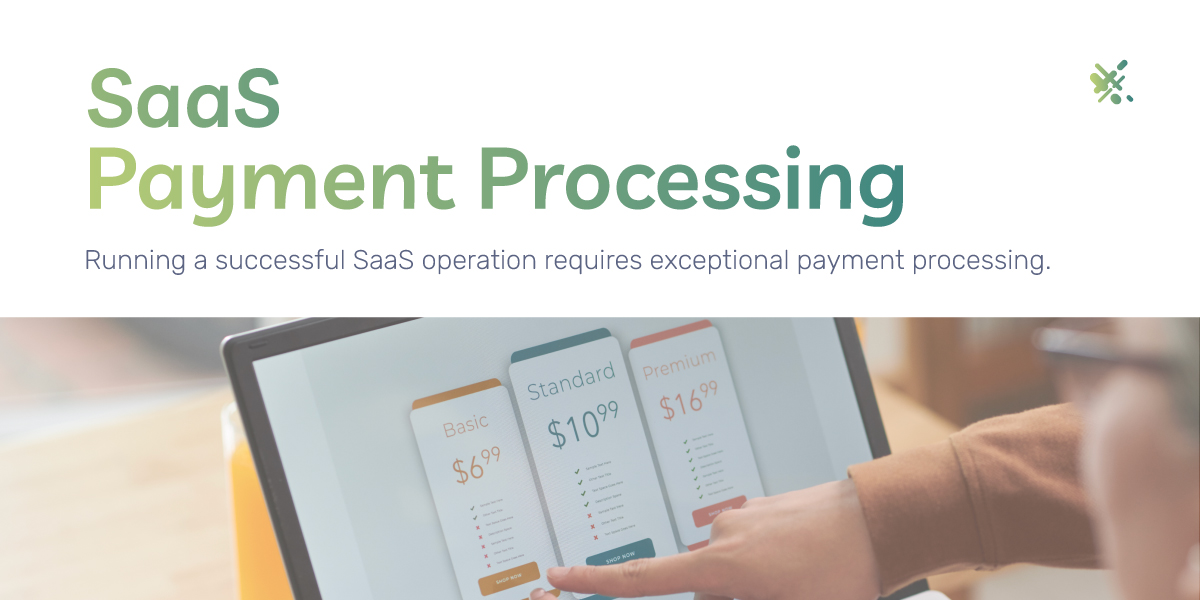Running a successful SaaS operation requires exceptional payment processing. By offering a subscription-based software service, customers can customize their experience with the software based on their own needs and experience smooth payments.
SaaS, or Software as a Service, has been one of the fastest-growing sectors in the technology and software market. In fact, in 2022, the SaaS market was valued at $261.15 billion. It is expected to grow at a CAGR of 13.7% from 2023 to 2030.
Because of the growth and availability, there is a far lower cost of entry for many customers over traditional software licensing. Lower costs make customers more willing to test a product and become long-term customers.
Businesses that offer SaaS also enjoy these benefits as it can set up a recurring business structure where businesses have a much easier time forecasting revenue and growing over time.
But that recurring business model can present specific unique challenges to SaaS companies. Recurring billing requires certain integrations and workflows that more traditional software payment processing doesn’t need.
Below, we’ll go over the key SaaS challenges related to SaaS payment processing. We’ll also provide solutions to these challenges so businesses can leverage the full advantages of the SaaS business model for maximum revenue.
The SaaS Billing Process
The SaaS payment process is known as automatic recurring billing within the payment industry. This type of billing is mainly associated with membership or subscription-based e-commerce sites. But it also applies to services, such as software, in this case.
While SaaS may be a relatively new industry, payment solutions providers are familiar with this style of billing, and many have adapted and started providing tools specifically designed to address the needs of the SaaS payment model.
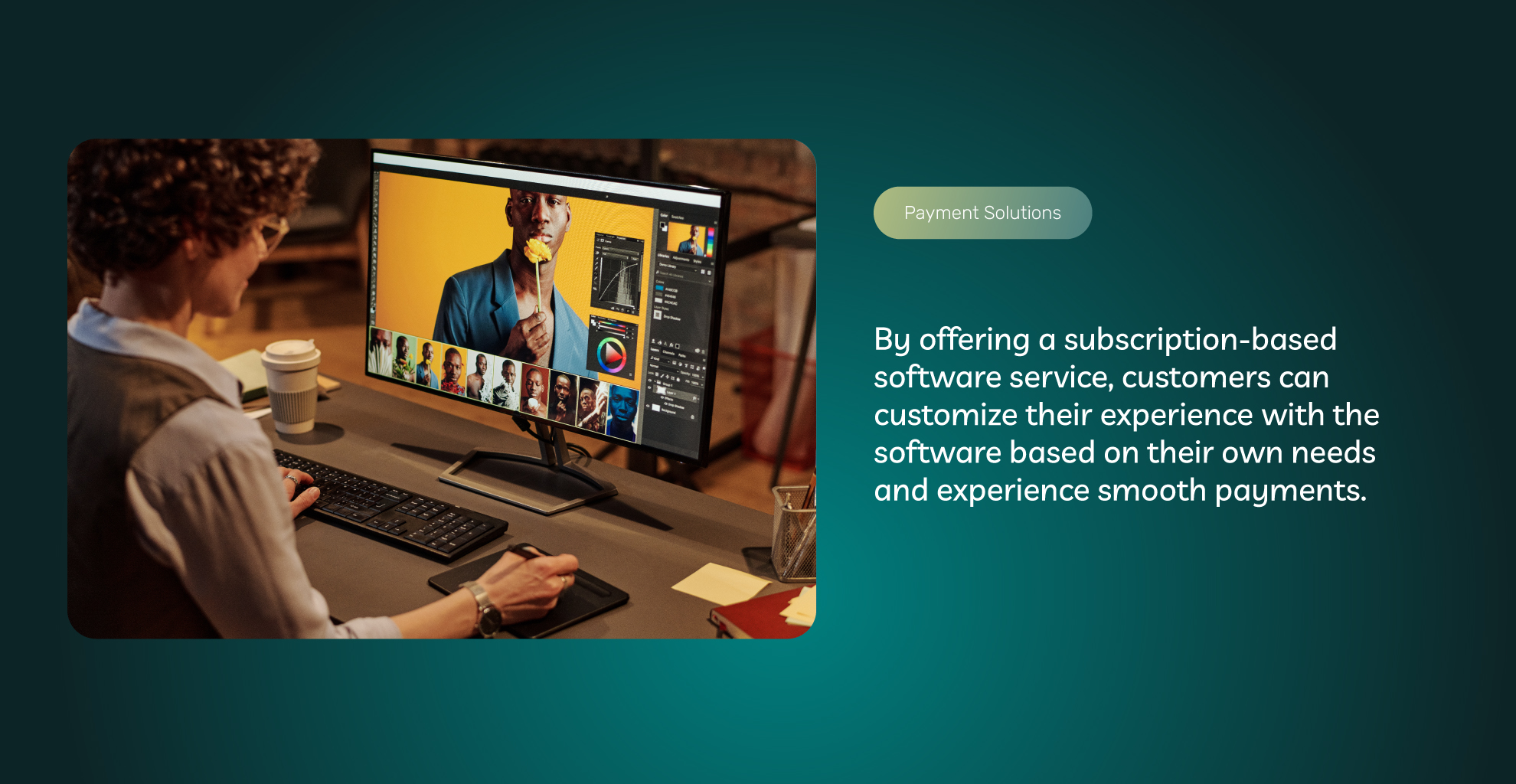
How Does SaaS Payment Processing Work?
So, how does SaaS payments work? SaaS payments occur via the same network as other credit cards or ACH transactions. The main difference is that they are recurring payments, and the recurring billing cycle or interval is either handled by the payment gateway itself or the subscription management software the SaaS business is using.
But there isn’t a separate SaaS system for processing these payments. Instead, it’s about integrating traditional billing with SaaS pay terms such as monthly or annual.
Unique Aspects Of SaaS Billing
A critical aspect of SaaS billing is that it’s generally for B2B or business-to-business situations. Because of this, there are also particular invoicing concerns and solutions to be aware of. One customer may have a subscription for hundreds, if not thousands, of licenses for a piece of software. This may require annual or monthly invoicing, adding another layer to SaaS billing.
At the same time, SaaS may also sell those same services to small businesses consisting of one or a few people. So the SaaS payment processing solution needs to handle large enterprise clients, small organizations, or even individuals.
A business could have separate payment systems for these different types of clients, which would complicate an already challenging billing environment. Instead, finding a single payment processing solution that can accommodate both extremes and every situation in between is advantageous.
Benefits Of A Complete SaaS Payment Processing Solution
For almost any business, having the right payment solutions can help the bottom line. But when it comes to payment processing, SaaS businesses are even more sensitive to this. Being able to attract new customers and keep the ones are crucial to the business model, and the right payment solution plays a central part in that.
Acquiring new customers and Sign-ups
A key area of SaaS businesses is that they need a straightforward sign-up and onboarding process via web browsers or apps. Any complication with SaaS credit card processing or friction while signing up can hurt conversions and cause a hard-earned lead to turn away and look for a competitor.
This is why a SaaS payment processing must be as frictionless as possible. This includes tight integration with the service and business operations software platform. So things like the API to access the payment gateway must be compatible with all aspects of your onboarding process. If necessary, you may need to develop custom solutions based on your payment gateway’s API, which is another consideration when choosing a payment solution.
When the sign-up and onboarding processing is easy, your conversion rate increases and leads become more profitable. Resulting in a higher ROI on your ad spend and lead generation campaigns.
SaaS as an industry has become incredibly competitive, and the cost to acquire new customers has grown substantially as established players and new rivals all vie for the same pool of customers. The proper payment solutions help to combat this issue and help lower your cost of acquisition.
Reduce Involuntary Churn
One of the killers of a SaaS business is churn. Churn is the industry term for the number of users who leave the service after signing up.
Of course, you will always have a certain percentage of churn in any subscription business. But most businesses don’t realize that billing plays a considerable role in reducing churn.
Many times, churn is the result of failed billing with online payments. Resulting in involuntary churn since the customer didn’t take direct action to cause the cancellation.
If a recurring payment fails, the customer may avoid going through the trouble of finding out why the payment failed or trying to remedy it. To use a sports analogy, this is essentially an unforced error. That customer may have happily paid for months and months, but an avoidable payment failure caused them to cancel early.
There are tools available through your payment processor that are dedicated to recurring business models like SaaS and help reduce this churn.
We’ll go over the details of these tools in a later section about solutions for SaaS payment processing.
More Efficient Customer Service And Reduced Costs
The right SaaS payment processing solution allows tight integration with your website and product. So, customers can have their own portal to manage their subscriptions, make payments, update their payment method, or upgrade their service.
By allowing these tools to be accessed directly by the customer, you reduce the number of customer support requests. Less need for customer support frees up your employees and other human resources to focus on more critical tasks now that basic billing and payment processing functions are mostly automated.
Highly integrated customer payment portals also allow for upsells. When the customer can easily upgrade on the spot to access premium cloud computing tools or services, you have higher upsell conversions and increased revenue.
SaaS Payment Processing Challenges
There are unique problems that face SaaS companies when it comes to payment processing. Thankfully, there are solutions to these problems, but only if you use a payment processor that offers the right tools. A typical retail sales payment processor may not have the experience and tools to deal with the complexities of SaaS payment processing.
Below are key areas to consider when choosing a payment processor for your SaaS business.
Scalability
A SaaS provider can experience rapid growth in a short amount of time. Therefore, the company needs to have a payment processing solution equipped for scalability. Payment processing needs to handle the demand from the start since implementing a new payment system as your business grows is inefficient or even feasible sometimes.
Ensure your payment processing solution can handle your growth even if you’re starting small. You don’t want to damage your growth because your payment system cannot handle the demand.
Worldwide SaaS Payment Processing
Depending on your service, you may need to handle international or global payments, such as currencies and charges from different countries worldwide.
You’ll need a payment gateway and processor that handles all the markets in which you’ll be doing business.
SaaS Payment Processing Methods
Another area of SaaS payment processing that businesses need to be aware of is the number of payment methods they can accept.
Small customers will likely use credit or debit cards. Therefore, it’s essential to be capable of processing all cards, including American Express, which businesses often use. Some payment processors don’t always process for American Express or may charge extra.. But, in most cases, American Express has additional payment processing fees that many merchants like to avoid.
Enterprise customers may require invoicing and the ability to pay via ACH. So it’s essential to use a payment processor that offers these payment options in the same package.
Overall, the more payment options you have, the higher the probability of acquiring new customers and keeping an existing customer if they have unique payment needs.
SaaS Payment Processing Security
Security is one of the top concerns when processing credit cards and customer billing data. A data breach can be a considerable liability, both financially and reputationally. Even a minor breach can erode trust in your company and undo the loyalty you’ve built with your customers.
This means your payment solution needs to have security tools in place to help you mitigate these risks.
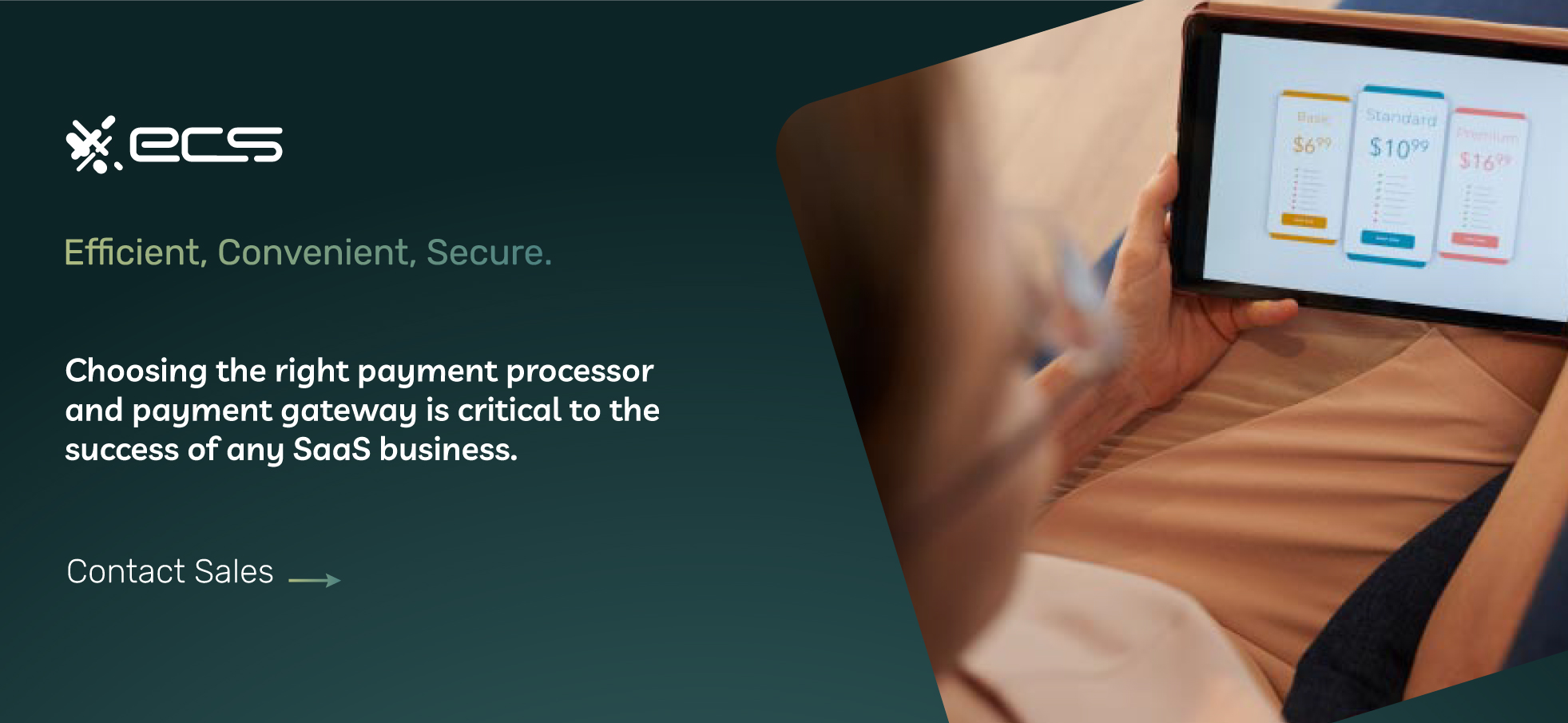
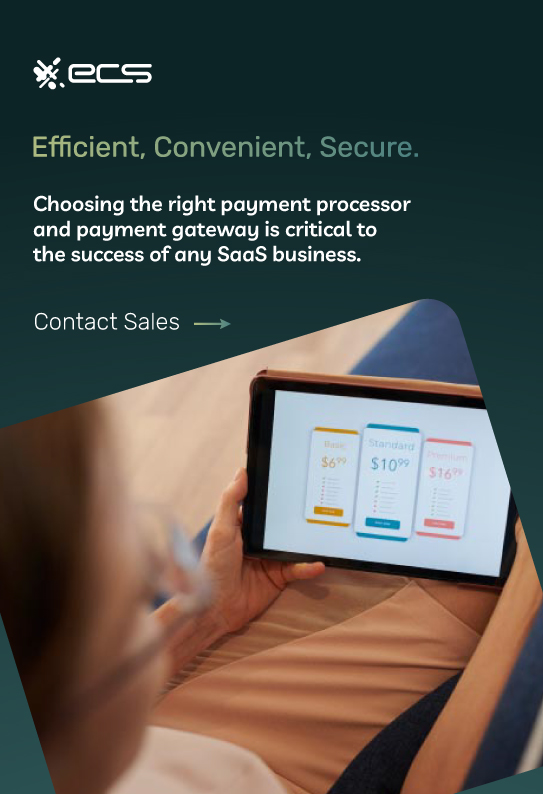
SaaS Payment Processing Integrations
SaaS businesses also may have hybrid or variable pricing models. Variable pricing models mean that not every subscription costs the same amount month after month. This model type is generally referred to in the SaaS industry as usage-based or per-user billing.
For example, a project management app may charge whenever a customer adds a new user to the service. The customer then receives a charge for that new amount at the end of the month.
This requires integrating your payment gateway API and the software you use to manage your subscriptions. This subscription management software can be a third-party solution, a custom solution the business developed, or the tools the gateway provides to manage recurring payments.
Other integrations, such as Quickbooks integrations, can involve your accounting or management software. Accounting software integrations allow you to bring your sales data directly into Quickbooks. You can also use Quickbooks for your SaaS invoicing and billing if customers require invoices or terms.
You may also use a customer relationship management (CRM) application like Salesforce to track your leads and other metrics. Additionally, you can also integrate these CRM cloud services with your SaaS payment solutions.
SaaS Payment Processing Solutions And Tools For Billing
Choosing the right payment processor and payment gateway is critical to the success of any SaaS business. Since the billing features are directly tied to the business model, there must be a tight integration between payments and other applications.
Payment Gateway For SaaS
One of the critical elements of any payment solution is the payment gateway, especially for SaaS billing. The SaaS payment gateway is the network that carries the customer’s billing information between banks as the charges are authorized.
As a business, you can access a payment gateway through your merchant account. Payment providers such as ECS Payments offer merchant accounts to SaaS businesses and access to the best SaaS payment gateways.
Since all of your billing will take place over the payment gateway, it’s essential to work closely with your payment processor when choosing the right payment gateway for your business.
You must integrate virtually all of your business applications involved in payment processing with the gateway.
Automatic Card Updating
Most SaaS customers will be paying via credit card or debit card. The problem is that customer card information is often updated because the original card expired or a new card was issued due to loss or theft.
When this happens, payment processing can be interrupted since the information on file with the SaaS business is no longer accurate.
Payment gateways offer tools known as automatic card updaters, which help to solve this problem. The automatic updates check with the issuing banks to see if card information has changed since the previous billing cycle. If so, the card information on file with the SaaS business is updated so payment can continue uninterrupted.
Updated billing helps reduce involuntary churn and the load on customer service, which may have otherwise had to deal with that customer’s billing issue.
There is sometimes an extra fee for using this automatic card updating service. Still, it is well worth the additional price. It will pay for itself when used by any SaaS business or recurring billing business.
Third-Party Subscription Management Software
Some SaaS businesses choose to use a subscription manager. Service SaaS payment companies like Maxio or Recurly offer to help with some logistical management of complex SaaS billing. These tools can be helpful, but you will still need your own merchant account and payment gateway to integrate into the service.
If you plan on using one of these SaaS payment systems, it’s essential to learn about which gateways they are compatible with and any limitations of those integrations. You can then make a much more informed choice when choosing your own gateway with your payment processor.
It is important to note that many payment gateways now have built-in tools to help with recurring billing, specifically for SaaS. So ensure you know what your payment gateway may already provide. Knowing this can save your business money and remove an extra layer from your technology stack if you don’t need a third-party subscription manager.
If you want to learn more about built-in payment gateway tools available to SaaS companies, contact ECS Payments and speak with one of our experts. We specialize in recurring payment processing and can help you determine which payment gateway solutions suit your business model.
Automatic Invoicing
Larger customers paying for SaaS on a per-user or variable rate may prefer to be invoiced instead of paying via credit or debit card.
Invoicing for a SaaS business needs to either be entirely automated or done with minimal manual intervention. To accomplish this, businesses must integrate their payment solution with their accounting or invoicing software.
Most popular accounting or business management software applications will allow for payment gateway integration. The integration allows invoices to be sent directly from the software without intervention.
Payment gateways also provide various hosted invoicing tools. Merchants can use these tools in addition to recurring subscription tools or customer information storage.
Whichever method you choose to handle your invoicing, taking advantage of all the automation possible within your billing workflow is crucial. Automation reduces labor costs, errors, and other issues that can come with manual invoicing.
Common Mistakes With SaaS Payment Processing
There are a few areas where new SaaS businesses tend to make mistakes regarding their payment SaaS business model and billing practices. Try to avoid these pitfalls, and you can save your business considerable money and extra work down the road.
Don’t Store Customer Billing Data If You Don’t Have To
With recurring payment processing, there is a need to keep billing information on file, such as credit card numbers and other pieces of sensitive information. However, most businesses do not need to store this information locally on their own servers.
With the right integrations, most businesses can store this information using the payment gateway, which can be tokenized for repeated transactions. These cloud-based payment gateway features can significantly reduce a business’s security requirements.
Storing the information on a business’s servers increases data security requirements and liability. So unless your business has to store this data, use payment tools to store this on the payment gateway’s servers instead.
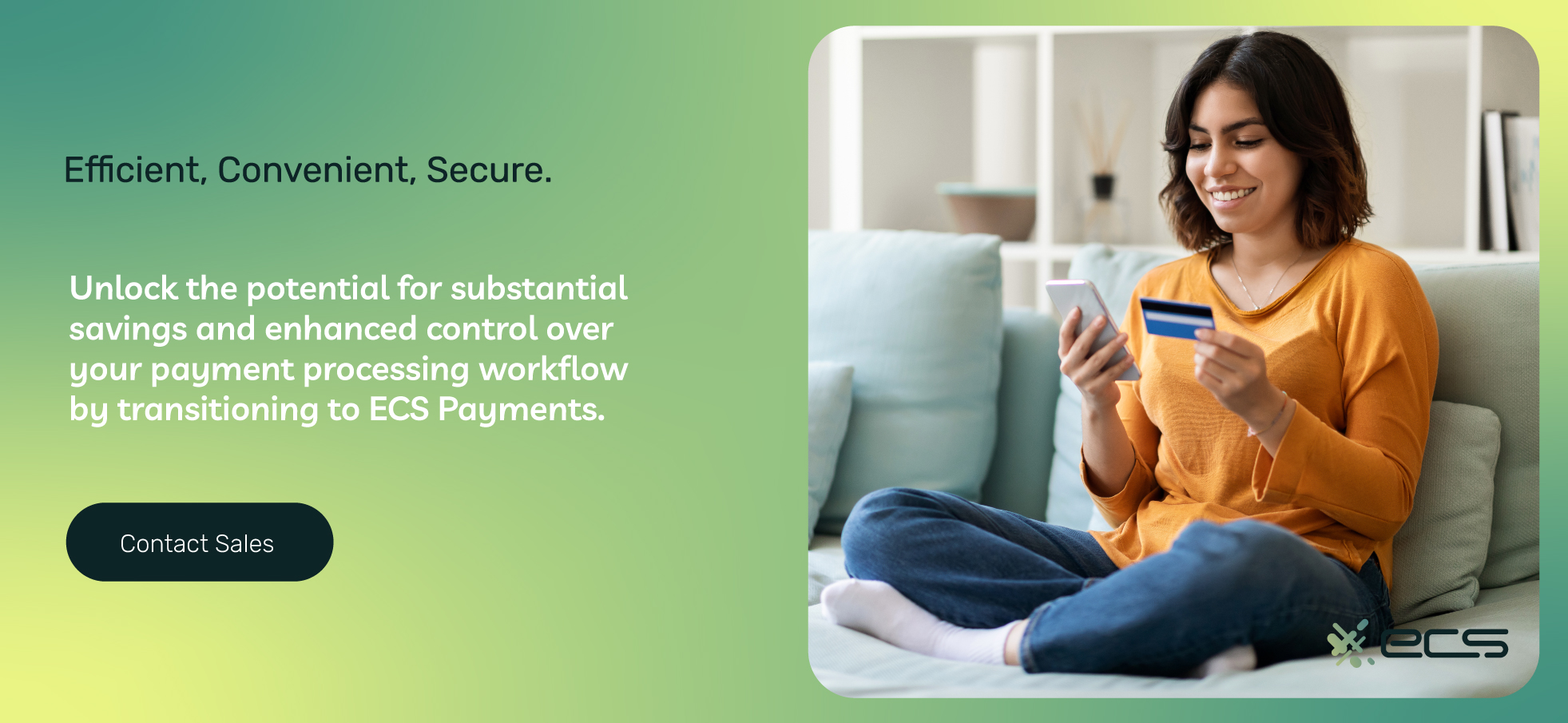
Avoid Aggregate Merchant Accounts
Aggregate merchant accounts are services that pool merchants together under one large account. Pooling merchants help them mitigate risk and offer services to a larger collection of customers. For example, companies like Stripe or Square offer these aggregate merchant accounts as a SaaS payment platform.
You may have seen these services advertised in many SaaS articles found around the internet.
However, the problem with these services is that you don’t own the merchant account, and you can be cut off from your funds or terminated for almost any reason and at any time.
For a business that relies on recurring billing, this can be catastrophic. Not to mention, these services generally charge higher fees than if you had your own merchant account. In a recurring payments business like SaaS, these fees keep adding up month over month.
Avoid these services and instead obtain your own merchant account and payment gateway access. You will then have complete control over your entire payment processing workflow and likely save substantial money.
Don’t Offer Complex Billing Options
It would be best to avoid complex billing options that can confuse your customers. Most successful SaaS companies have simple pricing structures and easy-to-understand payment terms.
Transparency helps to increase trust as well as initial sign-ups and conversions. But it also helps from a billing perspective to reduce chargebacks and customer complaints, which take up valuable resources.
Chargebacks ratios are important to keep an eye on, as exceeding a certain threshold can threaten your ability to process payments. They can also be costly due to fees and take up resources a business could use elsewhere.
By keeping your pricing model straightforward, you can increase conversions and help to avoid many payment disputes. The SaaS industry standard is to offer three to four different pricing tiers, each with well-defined services and limitations.
You should also clearly outline your payment terms. So options such as how to cancel, upgrade, and any penalties or extra fees should always be clearly outlined on the sales and checkout pages.
Finding the Right SaaS Payment Processing Solution For Your Business
The SaaS business model is highly successful, and the industry’s growth rate looks to be on a strong, upward trajectory for the foreseeable future.
However, as the market matures, it means businesses will need to leverage areas of their business to maintain their market share or grow in a highly competitive space filled with new players.
If you need the latest payment processing technology for your SaaS business, contact ECS Payments. We work with SaaS businesses on a one-to-one basis to find the right payment solutions for their billing needs.
Contact ECS Payments today to learn more about our innovative payment solutions that help SaaS businesses stay one step ahead of the competition.
